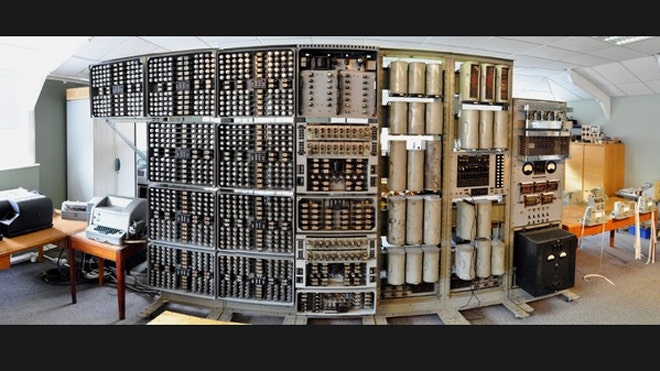The 61-year-old Harwell Dekatron about the size and weight of an SUV was originally hailed as a slow, steady machine capable of delivering error-free calculations while running for 90 hours a week. It has survived to become the oldest original working digital computer following the announcement of its completed restoration by The National Museum of Computing (TNMOC) in the U.K. today (Nov. 20).
"In 1951, the Harwell Dekatron was one of perhaps a dozen computers in the world, and since then, it has led a charmed life surviving intact while its contemporaries were recycled or destroyed," said Kevin Murrell, a trustee at TNMOC.

The computer relies on 480 relays that have more in common with telephone exchanges rather than modern PCs or Macs. Such relays sit inside a collection of racks that also hold 828 flashing Dekatron valves gas-filled counting tubes used in the early days of computing rather than the transistors of modern electronics.
"The restoration was quite a challenge, requiring work with components like valves, relays and paper tape readers that are rarely seen these days and are certainly not found in modern computers," said Delwyn Holroyd, a volunteer at TNMOC.
Running the computer requires about 1,500 watts of power roughly equivalent to the power consumption of a modern hairdryer. By comparison, a laptop might use just 50 watts (1,000 watts being the equivalent of a kilowatt).
The computer does not convert calculations to the modern binary computer code consisting of ones and zeroes. Instead, the Dekatron valves each hold 10 gas-filled tubes that can each be activated as part of its decimal counting system.
Clattering paper readers and printers surround the computer to create a sound more like a roomful of typewriters than the quiet, whirring fans of modern computers.
Harwell Dekatron first served in the Harwell Atomic Energy Research Establishment that represented the U.K.'s main center for nuclear research from the end of World War II through the 1990s. But the computer had become redundant by 1957 and ended up as a teaching computer at the Wolverhampton and Staffordshire Technical College until its retirement in 1973.
The computer joins other relics of the early computing age at The National Museum of Computing, such as a rebuilt Colossus computer originally made by the Allies to break Nazi codes during World War II.